If you’re building your first gaming computer, changing your broken hard disk cable, transferring data from an old hard disk to a new SSD in all scenarios, you will need a SATA Cable to complete your task. And you should aware that what type of SATA cable will be used for which job and for this we will going to discuss SATA Cable and its type in detail.
Table of Contents
What Is a SATA Cable and Where is it used?
Serial ATA or SATA (Serial Advanced Technology Attachment) is a computer bus interface released in 2001. It is an IDE (Integrated Drive Electronics) standard which used to mainly connect the computer’s host bus adapter to storage devices like Hard Disk Drive (HDD), Solid State Drive (SSD), or Optical Drives like CD/DVD Drive. SATA data cables come up with different versions which vary in speed and their length can be up to 1 meter (3.3 feet).
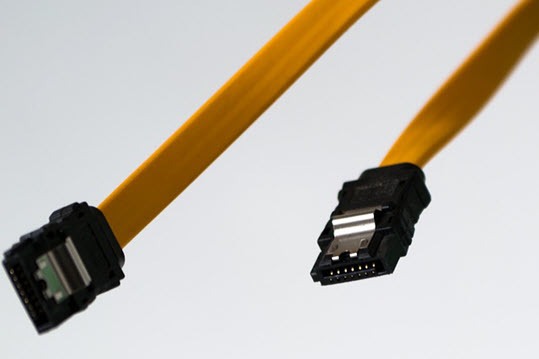
Generally, SATA cables come with computer CPU cases and are used inside the case to connect computer hardware to the motherboard.
Only eSATA (External Serial Advanced Technology Attachment) cable is used outside of the computer case to connect external storage device without extra power supply.
eSATAp (Power over eSATA) is a combination of eSATA and USB which uses when the external drive needed an external power source to transfer the data. The connector of this cable provides both data transfer and power.
Is there a difference between SATA I, SATA II, and SATA III Cables?
SATA Cables come in different versions which vary in speed and features. Look at the table to know more.
| SATA Interface Revision | Released Year | Revision Speed (Gbit/s) | Bandwidth Input (MB/s) | Features |
| SATA 1.0 | 2003 | 1.5 Gbit/s | 150 MB/s | SATA 1.0 is a first-generation SATA interface that supports hot-plugging and provides many advantages over the previous PATA interface such as reduced cable size, cost, and its conductors to 7 instead of 40 to 80. |
| SATA 2.0 | 2004 | 3 Gbit/s | 300 MB/s | Introduced Native Command Queuing (NCQ). Handle modern mechanical drives without rupturing and interrupting data transfer and more |
| SATA 2.5 | 2005 | Synthesize the specification to a single document | ||
| SATA 2.6 | 2007 | Introduced mini Internal and external Multilane cable and connector. Improvement to the BIST Activate FIS and enhancements for robust reception of the Signature FIS and more. | ||
| SATA 3.0 | 2009 | 6 Gbit/s | 600 MB/s | Continued compatibility with SAS, Improved power management, and more. |
| SATA 3.1 | 2011 | Introduced Hardware Control Features, Universal Storage Module (USM). Improves solid-state drive performance and more. | ||
| SATA 3.2 | 2013 | Introduced DevSleep that enables lower power consumption in SATA drives. SATA Express introduced an interface that combines both SATA and PCI Express buses to give higher throughput of 1969 MB/s and more. | ||
| SATA 3.3 | 2016 | Introduced Shingled magnetic recording (SMR) that increase the capacity of hard disk by 25 percent. Transmitter Emphasis Specification. Power Disable feature for remote power cycling of SATA drives and more. | ||
| SATA 3.4 | 2018 | Introduced Device Temperature Monitoring, Device Sleep Signal Timing, Durable/Ordered Write Notification, and more. | ||
| SATA 3.5 | 2020 | Introduced Command Duration Limit Features, specify Ordered NCQ Commands, and more. |
What are the Types of SATA cables?
There are several types of SATA cables ranging from their length to connectors. Different computer components need different types of cables. You should know which computer hardware needs what kind of SATA cable for best performance and low power consumption.
SATA-SATA – It is a standard cable that comes in different sizes that used in standard SATA applications.
eSATA – This cable introduces in 2004 for external connectivity. It uses tougher and shielded cable that lengths from 1 meter (3.3 ft.) to 2 meters (6.6 ft.).
eSATAp – eSATAp stands for Power over eSATA. This cable is integrated with both SATA traffic and device power in USB like case that is primarily used for 12 V 3.5-inch disk and CD/DVD drives or 5 V 2.5-inch disks.
Micro SATA – Micro SATA cable is used for backplane application and to connect 1.8-inch (46 mm) Micro SATA Drives to computers.
Mini-SATA (mSATA) – mSATA was introduced in 2009 by Serial ATA International Organization. This cable is used in several applications including laptops, netbooks, and other devices that require a small solid-state drive (SSD).
SATA Express – SATA Express is a new interface that is used in both SATA and PCIe storage devices. The host connectors are compatible with the 3.5-inch SATA data connector, which allows the connection of two legacy SATA devices and at the same time, it provides two PCI Express 3.0 lanes.
SATA Bracket – With the help of SATA Bracket or dual-port eSATA expansion brackets, you can make your computer output compatible with eSATA drive.
SATA Bridge – SATA Bridge is a SATA interface acting as a bridge between devices and used to connect ATA devices such as hard disks and CD-ROMs to SATA motherboards or PCI cards.
SATA Power – SATA Power is an interface that is used to connect the power adaptors or extensions for the power supply whether it is a hard drive or any other ATA device.
Low Profile SATA – It is an Ultra-thin SATA cable with low profile connectors which used to connect Graphics cards to the motherboard.
SATA Cable vs PATA Cable
Many people ask ‘how a SATA cable is different from a PATA cable’ so there are many aspects that SATA cable is better than PATA cable.
PATA stands for Parallel Advanced Technology Attachment or Parallel ATA also called ATA or IDE is a standard interface. It was first developed in 1986 by Western Digital and Compaq for hard disk drives and CD/DVD drives. However, it was discontinued and completely replaced by Serial ATA (SATA).
SATA provides several advantages over PATA cable that’s why it was completely phased out.
The first advantage of the SATA interface is data transfer speed. SATA is capable to transfer data at speed of 150/300/600 MB/s while PATA’s maximum data transfer rate is 66/100/133 MBs/s. That means SATA loads any application, images, videos, or any other programs quicker than PATA.
SATA cables are wider and thinner than fat PATA cables. So it is easy to manage and takes less space inside the computer case which is better for airflow and decreases build-up heat inside the case. SATA cable can be up to 1 meter (3.3 ft.) long in size whereas the PATA cable’s maximum length is 18 inches (1.5 ft.).
Usually, 2 PATA cable connection are available in motherboards, while 4 to 6 port provides for SATA connection which allows multiple SATA hard drive connection in a motherboard.
SATA interface has a 7 pin connector that consumes less power and voltage instead of 40 or 80 pin connectors of PATA cable. SATA cable also features an angled connector such as 90 degree or L-shaped connector which makes cable management much easier.
What are the main features of SATA Cable?
SATA cable is more feature-rich than PATA cable which is very helpful during system management.
Hot Swapping
Hot Swapping is the replacement of computer hardware or component without shutting down, rebooting, or completely turning off the system, while Hot Plugging is the addition of a component to the system.
However, Hot Swapping works only if the host, drive, and OS will support this feature. Both SATA and eSATA support hot plugging. In eSATA hot plugging only work in AHCI mode while this feature isn’t supported in IDE mode.
Native Command Queuing
Native Command Queuing was formally called Tagged Command Queuing (TCQ) which is a feature of Parallel ATA’s or PATA. Native Command Queuing (NCQ) is an extension of the Serial ATA or SATA protocol allowing hard drives to improve inside requests in which got read and write orders are executed. This process increased performance and decreased the wear of drive for workloads.
Latching and Angled connectors
For better physical connection SATA cable features latching connectors that lock down mating retention with SATA ports and provide a solid connection between cable and port.
SATA cable also provides Right-angled connectors which are important to connect storage devices in a tight computer case where there is very little space. Right-angled SATA connectors really helpful in installing drives vertically, horizontally, or side by side.
Advanced Host Controller Interface
Advanced Host Controller Interface (ACHI) is an open host controller interface that allows the use of advanced features of SATA such as Hot Swapping and Native Command Queuing (NCQ) as these features only work when a system has ACHI mode. IDE systems do not support hot plugging.
AHCI only supports modern operating systems (OS) such as Microsoft Windows, Mac OS X, Linux with version 2.6.19, and later, FreeBSD, Solaris, and OpenSolaris. While Earlier operating systems such as Windows 98, Windows XP, etc. do not support SATA advanced features.
What does a SATA Cable look like?
Basically, two types of SATA cables are mostly used in computers.
- SATA Power Cable
- SATA Data Cable
SATA Power Cable Connectors
SATA power cable is used to supply power to a connected device. Usually, a 15 pin SATA power cable connector is used for SSD and hard drives. Apart from this, it comes up with different pin connectors for different function and power segments.
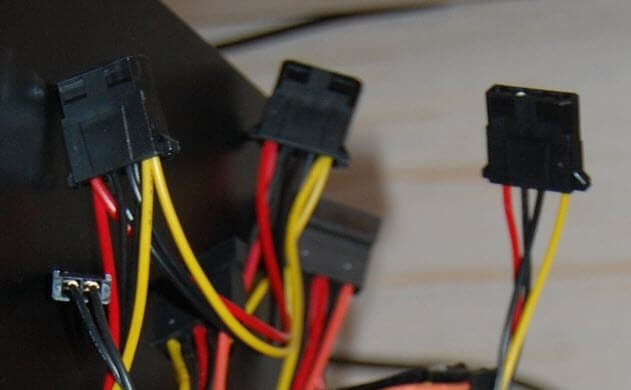
Standard SATA Power Cable Connectors Pins and their Functions.
| Pin | Functions |
| 1 | 3.3 V power |
| 2 | 3.3 V power |
| 3 | PWDIS mode 3.3 V power, pre-charge |
| 4 | Ground |
| 5 | Ground |
| 6 | Ground |
| 7 | 5 V power, pre-charge |
| 8 | 5 V power |
| 9 | 5 V power |
| 10 | Ground |
| 11 | Lurch spin-up/activity |
| 12 | Ground |
| 13 | 12 V power, pre-charge |
| 14 | 12 V power |
| 15 | 12 V power |
SATA Data Cable Connectors
SATA data cable is a thin ribbon-like cable with 7 pins connectors (four active data lines in two pairs and three grounds) which is 8 mm wide on each end. This cable is used to transfer data between connected storage devices like HDD or SSD.
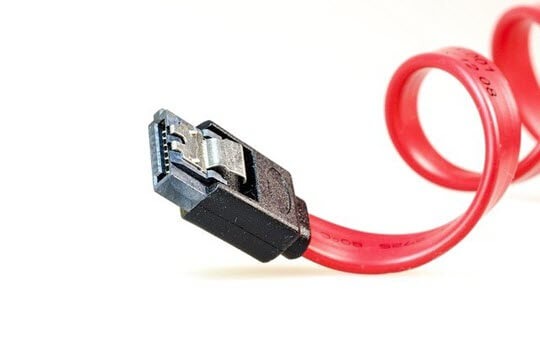
Standard SATA Data Cable Connectors Pins and their Functions.
| Pin | Functions |
| 1 | Ground |
| 2 | A + (Transmit) |
| 3 | A – (Transmit) |
| 4 | Ground |
| 5 | B – (Receive) |
| 6 | B + (Receive) |
| 7 | Ground |
SATA to USB Power Cables
SATA to USB cables is a type of adapter that is compatible with the PC and laptops USB 2.0 or 3.0 ports and it is used to connect internal HDD or SSD for power and data transfer.
What types of Drives need SATA Power and Data Cables?
As we mentioned above mainly three types of drives need SATA interface.
Hard Disk Drives (HDD) – HDD is an electro-mechanical data storage device for any computer that comes up with different sizes of 2.5 inches primarily for laptops and 3.5 inches for desktop computers.
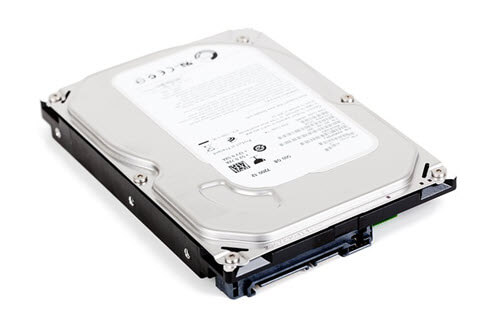
Solid State Drive (SSD) – SSD is a new generation storage device that is much faster than HDD and it comes up in different types and sizes such as 2.5 inches, M.2 drives, NVMe SSD.
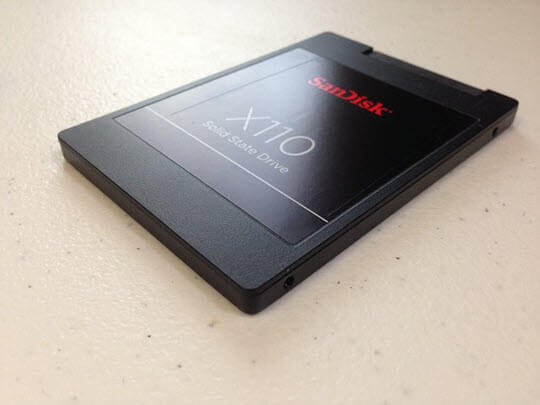
Optical Drives – CD/DVD drives also use SATA interface to run the drive.
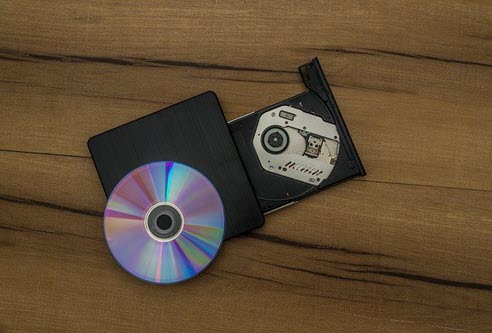
What are the Power Requirements for SATA Connections?
Power requirements can be varying according to connected devices. Modern CPU need 200-1800 Watts of PSU to run all of its components properly. So, make sure your Power Supply Unit (PSU) supplies enough amount of power to every SATA connection and other connected devices.
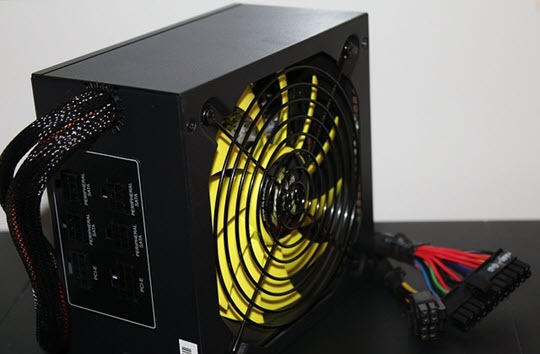
A CD or DVD drive will consume about 20 to 30 watts of power. While a Storage disk drive SATA connection requires 10 to 30 watts of power. In which a Solid-State Drive (SSD) uses less power ranging from 0.6 to 2.8 W. A 2.5″ Hard Disk Drive (HDD) requires 0.7 to 3 W whereas 3.5″ Hard Disk Drive (HDD) consumes 6.5 to 10 W of power. Larger and older mechanical drives consume more power than the latest versions of drives.
You can easily check the power consumption of your PC hardware without any hassle by using Power Supply Calculator.
How many SATA cables do you need for your drives?
If you have two mechanical drives (HDD), one SSD, and one CD/DVD drive then you need at least 4 SATA cables to connect these drives to a motherboard. 3.5-inch HDD requires both SATA data and 15 pins SATA power connectors. The more drives you have, the more you will need SATA data and power cables.
Also, make sure that your motherboard has a sufficient SATA port for all SATA connections.
If your motherboard has 5 SATA ports and you want to connect 6 drives then you have to use either SATA Converter Cables or you will not be able to connect more than 5 drives.
Where does the SATA Cable go?
SATA cable is a medium to connect the SATA devices to the motherboard through dedicated SATA ports. SATA cable comes up with different versions and generations which vary in speed and function.
Typically, 5 to 6 SATA ports are available on most motherboards models which are located on the onboard header on the motherboard with SATA numbers like SATA0, SATA1, SATA2, SATA3, and so on.
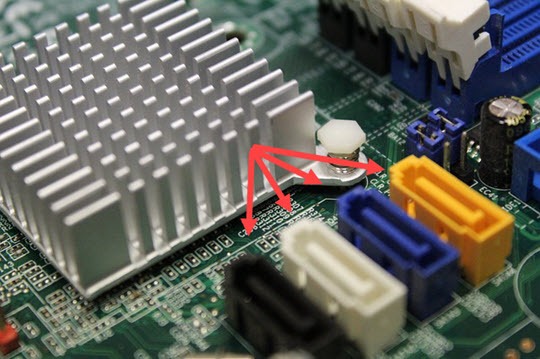
High-end motherboards provide all SATA ports of 3.0 for a fast communicating rate whereas low-end motherboards provide only 1 or 2, 3.0 ports.
Usually, 3.0 SATA ports are blue in color that offer 6.0 Gbit/s of speed while 2.0 ports are white and black offer 3.0 Gbit/s of speed. Many motherboards also provide eSATA ports located at the Back panel connector and usually, eSATA ports are in red color.
How to install a SATA Cable to Motherboard for HDD or SSD Applications?
Installing a SATA cable for HDD or SSD is not a big deal. If you only want to upgrade your hard disk for more storage space then you don’t need any extra SATA connector. You just need to remove SATA cable from your old drive and connect to the new drive.
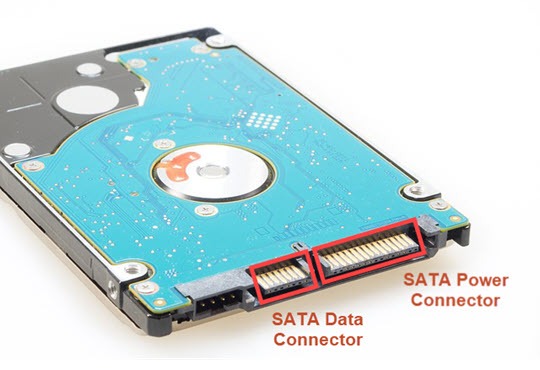
But if you want to add more drive then, you need an additional SATA cable but before doing anything make sure you have a free SATA port in your motherboard.
Follow the steps to add more drives to your system:
1. Insert your HDD or SSD into empty space of your CPU and connect your drive with a SATA cable connector.
2. After ensuring all things are good, tight your new drive to the case with screws.
3. Then, connect another end of SATA cable to the SATA port usually located on the lower right side of the motherboard on the motherboard with numbers like SATA0, SATA1, SATA2, and so on. If you don’t have much space in your case, you can use 90-degree angled connector so it can be easily connected to drives.
4. Complete the process after reviewing all connectors and SATA connections perfectly connected to their place.
If you change or replace your primary drive where your OS is installed, then you need to reinstall your operating system to your new drive. You can use SATA Converter Cables to transfer data from the replaced drive.
How to add more SATA ports to your computer motherboard?
If your motherboard doesn’t have enough SATA ports, you can increase the number of ports by using SATA Hub Port Multiplier, SATA PCIe Cards, or SAS SATA Expansion Card. All these SATA expansions or multipliers come in different generations, sizes, and speeds. So, make sure you buy only the best and compatible ones.
How to attach more SATA power connectors to a system?
If you want to add more drives to your system, you will need more power cables. As mentioned above SATA power cable is used to provide an additional power supply to internal drives. Without power cables, your drives will not be able to run.
You can use SATA Power Converter Cables, SATA power splitters, or Molex to SATA adaptor cable to attach more SATA power connectors to a system.
SATA Cable – FAQ
What are SATA Cables used for?
SATA or Serial ATA cables are used to connect SATA drives such as Hard Disk Drive, Solid State Drive, or Optical Drives to computer motherboards. Typically, SATA cables are available in two types i.e. SATA Power Cable and SATA Data cable. SATA Power cable is used to supply power to SATA hardware’s whereas SATA Data cable is used to transfer data.
How many Pins does a SATA Power Cable have?
The Serial ATA or SATA power cable connector features 15 pins which used to supply power to SATA devices and it is wider than SATA data cable connectors. New SATA power connectors contain more pins to supply 3.3 V along with traditional 5V and 12 V supplies.
How many Pins does an Internal SATA Data Connector have?
An internal SATA data connector has 7 pins with an 8 mm wide wafer at both ends. This SATA cable is used to transfer data and is available in different shapes such as straight, right-angled (90 degrees), or left-angled (L-shaped).
Where to Plug-in SATA Cable on Motherboard?
SATA cables are connected to SATA ports which are located on the lower right side of the motherboard with SATA serial numbers such as SATA0, SATA1, SATA2, and so on. The color of SATA ports reflects its versions, usually 3.0 SATA ports are in blue color whereas the 2.0 SATA ports are in black color.
Can a SATA Cable Affect Speed?
SATA cable speed varies on basis of the SATA cable version, a first-generation SATA cable SATA 1.0 can transfer data at a rate of 1.5 Gbit/s or 150 MB/s while SATA 2.0 and 3.0 SATA cable can communicate at a rate of 3 Gbit/s or 300 MB/s and 6 Gbit/s or 600 MB/s respectively.
How can I tell if a SATA cable is 6Gb/s or 600MB/s?
SATA cable available in different generations, SATA 3.0 is the third generation SATA cable which provides 6 Gigabits/s of data transfer speed. SATA 3.0 cable connectors have a locking mechanism called latch on both ends. So, If the latch is present in connectors it means it’s a 6Gb/s or 600 MB/s of SATA cable.
Conclusion
Unlike PATA cables, SATA cables are more feature-rich that not only provide a better data transfer rate but it is also easy to manage. This complete guide gives you a full explanation of SATA cables, their types, and everything you need to know.

